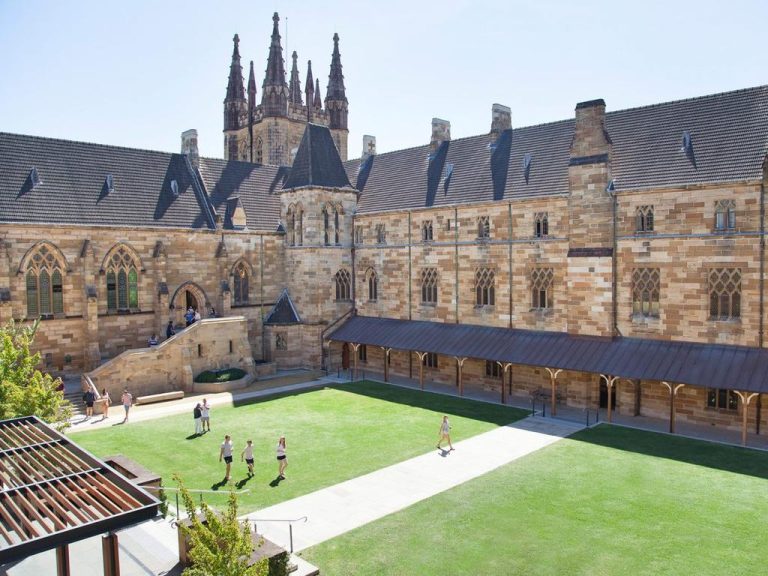Office market a tale of two cities

It was only 18 months ago that the office vacancy rate was raising questions in property circles. Were we headed for oversupply or should we instead be focused on the jump in sales volumes and some record prices for prime office assets?
To find out how the office market was travelling in 2015, we spoke with Colliers International national research director Nerida Conisbee and m3 property director George Bougias.
Demand for office tenancies
In the office leasing market at least, Australia is once again a two-track economy, with Sydney’s CBD and to a lesser extent Melbourne’s showing growth while demand remains weak across other markets
“We track tenant enquiries across Australia and over the last three years, Sydney enquiries have shot up and Melbourne has seen a rise,” Conisbee says.
Our outlook for Sydney and Melbourne is positive, but cautiously so
“In the Sydney CBD, vacancies started declining at the end of last year and incentives have peaked, but the fall in incentives so far has been very slow.
“It’s a similar picture in the Melbourne CBD or, more accurately, it will be come 2016. Incentive levels are continuing to rise and in my view we are about six to 12 months away from them peaking,” Conisbee says.

Melbourne’s office leasing market is at least six months away from peaking
Bougias agrees, saying: “Our outlook for Sydney and Melbourne is positive, but cautiously so. Absorption has been stronger in premium and A-grade space than in secondary stock, and was responsible for three quarters of new take up in Melbourne in 2014.”
But in Australia’s other major capitals leasing demand remains weak, with incentives still rising.
In Brisbane and Perth, it is the slowdown in resources and government spending taking its toll, while in Adelaide, conditions can be summed up as low supply of new prime space meeting a market of low leasing demand.
Tenant types the key
Many economists have been talking of a rebalancing of the national economy away from resources and towards services. But it is when you take a look at the types of tenants taking up space that the differences between our largest cities become apparent.
In the past, it was signature tenancies by large corporates that characterised the prime CBD office market. In Sydney in particular, that meant the finance sector.
Established tech companies want Sydney as their Australian base and for the last two years, their interest has shifted to CBD locations
But not this time. Much of the jump in enquiries in Sydney has come from the fast-growing tech and co-working sectors.
Conisbee says demand from the tech industry has changed fundamentally, driven by ‘second generation’ occupiers.
“Established tech companies want Sydney as their Australian base and for the last two years, their interest has shifted to CBD locations. Primarily this is because they need to attract the right Gen Y talent, who are not interested in working in suburban office parks.”

More tech companies are turning to Sydney’s CBD to base their operations
It is a similar story in the co-work sector. Conisbee cites We Work, a major occupier in New York, and GPT’s investment in Liquid Space as examples of how this rapidly growing niche is transforming some secondary CBD stock into formats not found in the traditional market.
In Melbourne, growth in demand has primarily come from professional services but also the education and training sector, attracted to backfill secondary CBD and city fringe space.
The difference in 2015 is that major finance tenants across Australia are focused on centralisation, rather than signing up for more space. Bougias says they are mainly concerned with cost management, with firms eyeing the diminishing gap between the costs of CBD locations and the broader metro market as an opportunity to move back to the city.
Bougias adds that the rise in incentives and weak rental increases has put the CBD back on the radar of smaller firms as well.
“Net absorption in Melbourne’s CBD is improving but it is moderate, driven by a greater diversity of tenant types, with smaller firms and the training sector taking up emerging backfill space.”
Slowdown in new supply
After a decade of significant increases in the supply of premium CBD office space, the outlook is for a period of slower supply.
In Sydney, a robust year in 2013 was followed by a year of slow growth, with just 3022sqm of supply added in 2014.
Of Brisbane, which is seeing an increase in uncommitted new prime space, Bougias says: “The market is facing a range of issues with supply which will take little time to play out”.
There will be fluctuations, but the longer term trend is of vacancies gradually coming down as many of the new buildings coming onto the market are fully pre-committed
Conisbee says Brisbane used to be a thinner market but is now securing a more diverse tenant base. She expects the Queensland capital will benefit from its cost advantage compared to Sydney, but notes that secondary space is hard to lease at the moment.
Colliers International research revealed that Melbourne’s improved enquiry rate is benefitting a market often considered to have a lack of institutional-grade office stock. While it is predicting a jump in Melbourne’s prime vacancy rate from 6.0% to 8.7% over the next two years, Bougias thinks long term net absorption will continue.

The supply of offices is expected to slow
“New supply is tapering off after a 40% increase over the last decade. There will be fluctuations, but the longer term trend is of vacancies gradually coming down as many of the new buildings coming onto the market are fully pre-committed.”
In Perth, higher vacancy rates look set to linger, thanks to falling demand from resource companies and government, with rentals likely to come back to a more sustainable level.
In Adelaide, a much greater portion of the market is held by private investors and government, but with the economic numbers for South Australia looking shaky, there appears to be little scope for new supply or rental growth.
The march of residential
In Australia’s two largest cities, the popularity of urban living is having a major impact.
“Residential conversion is resulting in a lot of secondary stock being taken out of the market. This phenomenon is strongest in Melbourne, where some 20,000 apartments are under construction or have approval,” Conisbee says.
“Asian developers are prominent and most have aggressive expansion plans, so this drive is likely to continue.
“Residential conversion is also strong in Sydney and is changing the pricing dynamic between secondary and prime buildings. Developers are looking at inner and middle ring properties, so the owners of suburban buildings aren’t feeling compelled to make strong lease offers.”
While this residential erosion of secondary stock looks set to continue in our two largest cities, there are far fewer examples in Adelaide, Brisbane and Perth.
Economic factors
Bougias says macro-economic factors are a big part of the explanation for the two-speed office market.
“Sydney is very robust, the strongest economy in Australia, and has a state government benefitting from a surge in property taxes,” he says.
“But across Australia only the housing supply sector is really moving ahead and over the long term the economy can’t rely on just one sector going gangbusters.

The housing supply sector continues to perform strongly
“Unemployment is the factor to watch. At forecast levels of 6.25% to 6.5%, I don’t see it playing a major role but if it heads above that mark we would find ourselves in new territory.”
For Conisbee, the storm clouds to watch could come from the housing market. “If we do see a major shakeout in residential – and most analysis is focused on Sydney – that could act as a dampener on consumers and flow through to the rest of the economy,” she says.
Investment demand points skyward
While the leasing demand picture is mixed, sales of Sydney and Melbourne prime offices have been strong, driven by demand from offshore investors and local institutions.
“I think we can say unprecedented demand for Sydney and Melbourne prime assets has led to a compression of primary and secondary yields,” Bougias says.
In Hong Kong, institutions are allocating 50% of their portfolio offshore, but with the Chinese institutions it is just 10%
“Over the last six to 10 months we have seen a 15-25 basis points fall in yields with money chasing Holy Grail assets with long WALEs (weighted average lease expiry).”
Conisbee points out that there is still more offshore investment to come. She notes that while demand from the United States, Canada, Hong Kong and Singapore has held up, it is China that will dominate offshore buying.
“In Hong Kong, institutions are allocating 50% of their portfolio offshore, but with the Chinese institutions it is just 10%, so there is plenty of scope for them to expand. To date it has just been the tip of the iceberg.”
Local institutions still dominate the buying of prime CBD offices across Australia, but many of them are now partnering with offshore groups for finance, like we saw when DEXUS linked up with Korean pension funds.
While institutions have been strong buyers, private investors have been doing more selling, as have governments over the last five years.
So where are we headed?
Bougias says commercial property cycles are notoriously hard to predict and notes leasing demand has been “frustratingly subdued”, given Australia’s low interest rates.
But both experts agree that the strong weight of capital chasing prime CBD office assets is likely to continue, despite moderate tenant demand.
For prime office assets in Sydney’s CBD and (to a lesser extent) Melbourne’s, the picture is bright.
But the immediate outlook remains challenged in Brisbane, Perth and Adelaide and in suburban complexes and office parks. These owners will need to find a way to capitalise on changes in tenant demand or opportunities for residential conversion to drive value from their holdings in the next two years.







